Choosing Your Frame
Frame Selection
The frame you choose can make all the difference to how your new spectacles will turn out. We have provided a few guidelines here to help you choose but remember there are no right and wrong choices, ultimately, you will be the one wearing them, and only you can decide what will suit you.
The first step is to select men’s or ladies’ as appropriate; many frames will appear in both categories as we feel they could be suitable for men and ladies. Men’s frames tend to be larger and more rectangular, whereas ladies’ frames are generally smaller and more oval.
Frame size
Each frame has a size printed on it, giving a good idea of its overall dimensions.
The first size is the width of the lens in millimetres, and the second is the bridge size.
For example, a 53/19 frame is larger than a 47/20 frame.
As a guide, men’s frames range from about 48-60 millimetres and ladies from 44-56 millimetres.
Sunglasses tend to have larger sizes as they are designed to cut out the light. Some will also have more curved lenses.
Check the size of your previous spectacles before you start. This will give you a good idea of the correct size to choose. The size will be printed on the side or inside the bridge. Some plastic frames are printed on the rim where it thickens to sit on your nose. The size will be in the format of 51/19 but may be printed as 51 □ 19.
There may also be a third size printed, the side length in mm. This will be 125-150mm, but most frames will be 135 or 140 mm. Larger frames tend to have longer sides. Generally, the sides should be long enough if the width is correct. Remember, the sides are adjustable.
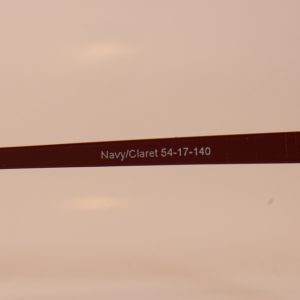
Ladies frames
Small – 44-47 mm
Medium – 48-51 mm
Large – 52-56 mm
Mens frames
Small – 48-51 mm
Medium – 51-54 mm
Large – 55 mm +
Frame Size and Prescription
If you have a minus prescription (-2.00, for example), your lenses will be thinnest in the middle and thickest at the edges—usually the outside edge by the temple. The bigger the frame, the thicker the lens will be. So a smaller frame size will give a nicer result than a larger one. The higher the prescription, the more important this will become. Generally, we recommend thinner lenses if your prescription’s sphere value is greater than -2.50 or +2.50.
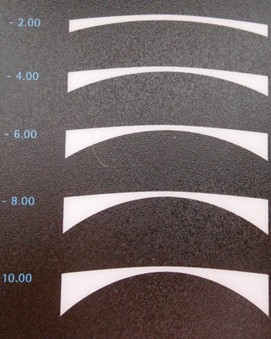
For a plus prescription (+2.00, for example), the opposite is true, and your lenses will be thickest in the centre and thinner at the edges. However, a small or shallow frame will make the lens appear thick at the inside edge by the nose. It is of no significant advantage to choosing a large frame deliberately to make the lenses smaller as we surface the lenses to match the frame size.
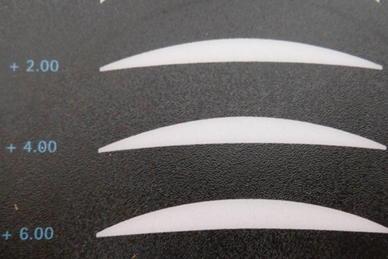
Bifocals & Varifocals
The same advice applies to the overall frame width as given above. However, you also need to consider the mechanics of the lens. In both cases, we have a distance section at the top and a reading section at the bottom. To see where you are going, we will set the distance section directly in front of your pupils. This means that there may not be enough room for the reading section in a very shallow frame. An overall depth (B measurement) of 28mm or deeper is ideal.
We have tried to limit the lens selection on a frame-by-frame basis so that a frame unsuitable for bifocals or varifocals will not allow you to select these lenses; however, these measurements depend on how the frame sits on you. We will send the frame to you for all bifocal and varifocal lens orders so that we can take measurements. Where appropriate, we will use a short corridor varifocal to give the best reading area possible.
D28 Standard Bifocal
Distance is at the top, reading in the segment at the bottom. If we cut this into too shallow a frame, we will lose some of the reading area.
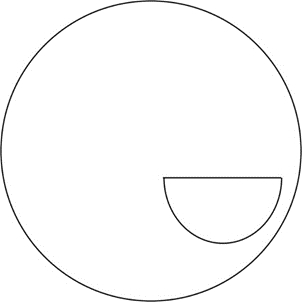
Standard Varifocal
Distance is at the top, with a gradual progression down to the reading section at the bottom of the lens.
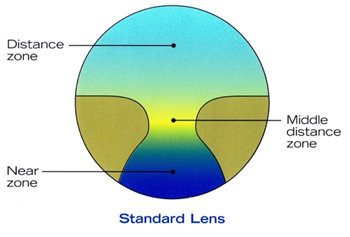
Supra & Rimless Frames
A supra frame has a frame at the top, but not at the bottom and generally behaves no differently to a full metal frame. However, if you have a small plus prescription (+0.50, for example), your lenses may be too thin for the groove that holds the lens. We can usually get around this problem by selecting a larger blank size for the lens, which will give us enough edge thickness. We will contact you if we foresee a problem.
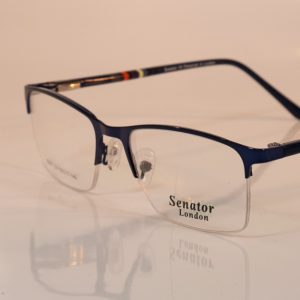
Rimless Frames
These are less robust than other frames, although the new designs that do not rely on screws to hold the lenses are much better. (We only stock the newer designs.) We do not recommend rimless frames for reading glasses that are constantly being taken on and off. Also, standard spectacle lenses are fairly brittle and can split, especially where the holes are drilled, so we will only use thinner lenses that are more flexible.
You need to be more careful with a rimless frame than any other, but if looked after, they can last years without problems.
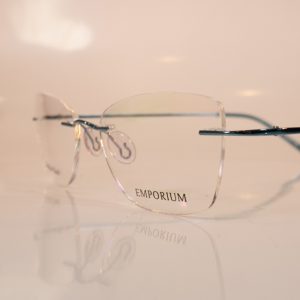
Frame Style & Colour
Essentially this is your choice but be aware that the current fashionable thick plastic frames are quite a statement. Everyone will notice you have new spectacles, and a rimless frame or a supra frame in a paler colour will blend in more.
Try to choose a colour that blends well with your hair colour, jewellery or with colours that you wear. Of course, you could decide to stand out by choosing something unusual.
Think about what you want your new spectacles for. Do you need something sensible for the office or a fashionable pair that will get you noticed at the weekend? Do you need both?
If you select photochromic lenses (lenses that get darker in the sun), they generally come in brown or grey – so consider would match the frame best? If you are getting new spectacles to match your outfit for a wedding or special occasion, be aware that photochromic lenses can look odd in photographs.
I have over 30 pairs of spectacles in my collection, all slightly different and in many colours to match whatever tie I wear. I have photochromic varifocal lenses for running, polarised varifocal sunglasses for cycling and driving, and office-type lenses for staring at a computer screen for hours. I also now have separate reading glasses for when I am reading for any length of time.
At Faversham Optical, we try to offer fantastic value for money and with complete spectacles starting at just £19 a pair, why not have a pair for each outfit and always look your best?